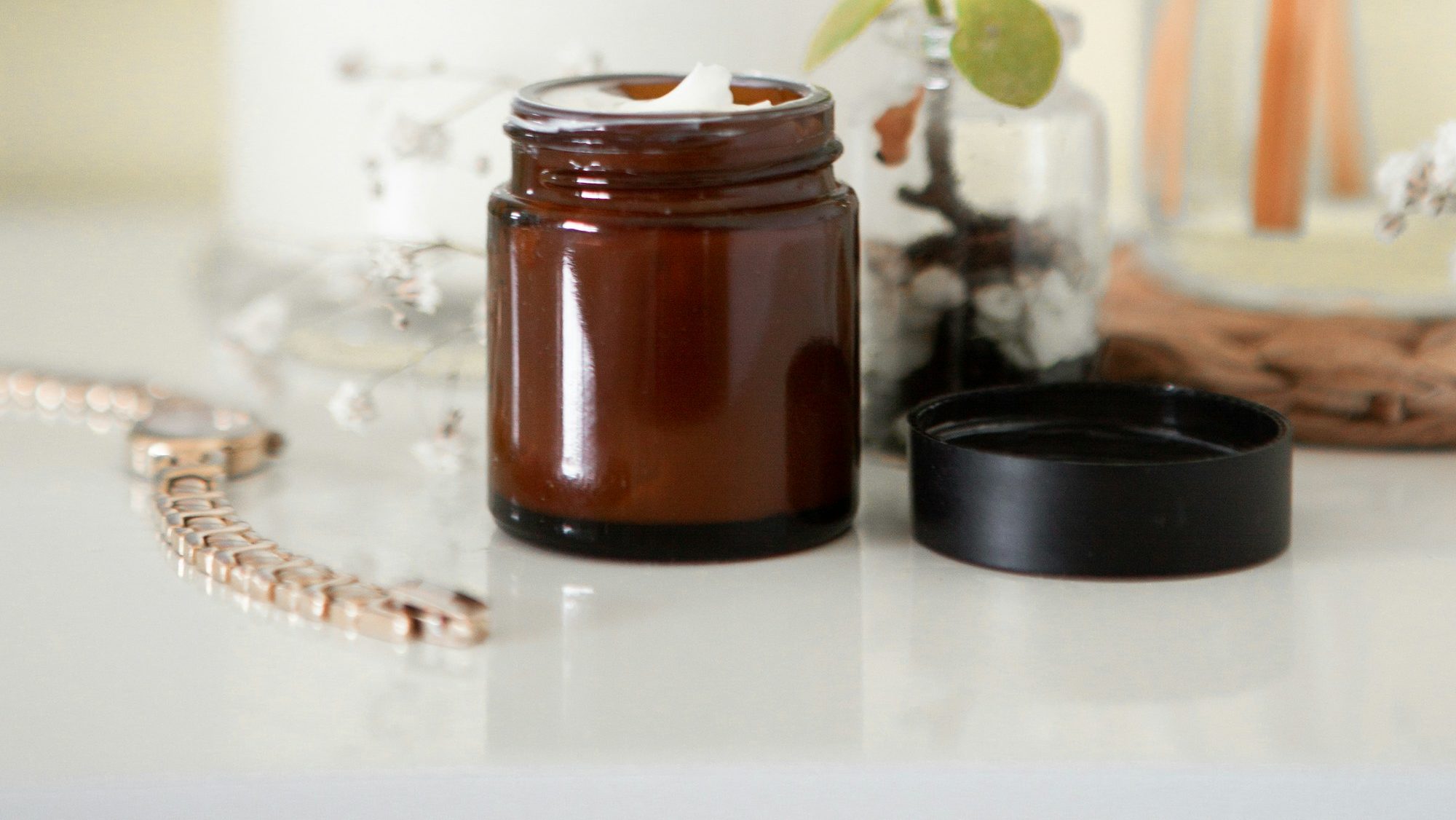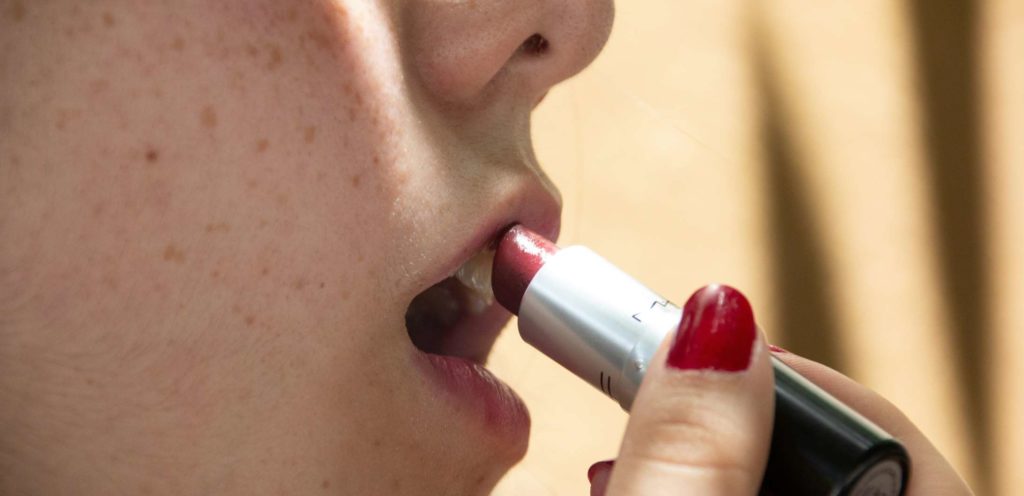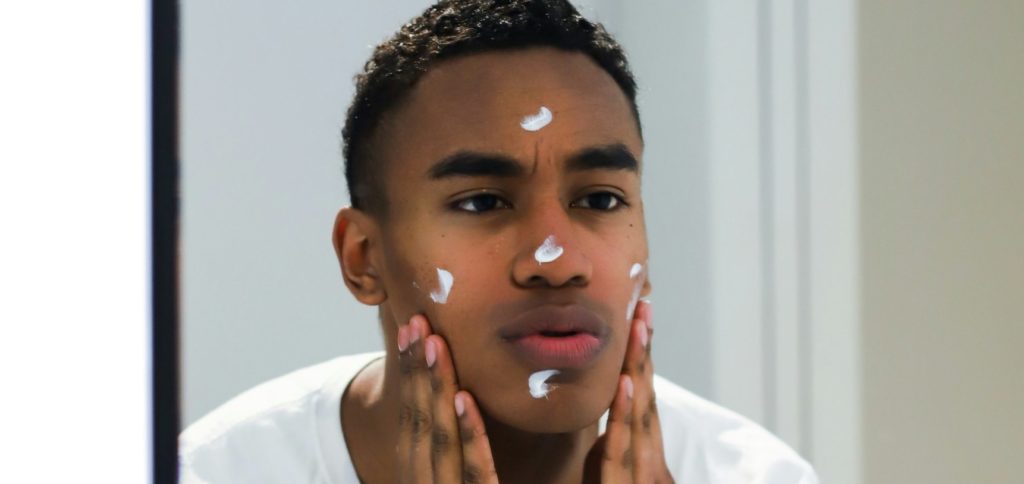
The EU Cosmetics Regulation decrypted for non-experts | Part 1
Cosmetic products in Europe – Are they full of toxic chemicals?
Cosmetic products are often perceived by consumers as containing toxic substances that are unsafe for the skin and health. Confidence in what we put on our skin and use daily is low, especially when the product does not claim to be “free from” or “natural.” But is this true? Are products preserved with parabens or phenoxyethanol less safe than those mainly composed of plants?
This article will shed light on what cosmetic products are according to the EU Cosmetics Regulation’s definition, the constraints imposed on manufacturers when formulating a product, how brands can meet cosmetics regulations in Europe, and what brands may and may not say when selling their products. Understanding these aspects is crucial for compliance with EU Cosmetic Regulations, which set strict standards to ensure consumer safety and transparency.
The EU Cosmetics Regulation definition
A cosmetic product means any substance or mixture intended to be placed in contact with the external parts of the human body (epidermis, hair system, nails, lips, and external genital organs) or with the teeth and the mucous membranes of the oral cavity with a view exclusively or mainly to cleaning them, perfuming them, changing their appearance, protecting them, keeping them in good condition, or correcting body odours.
Let’s break down this definition to understand it clearly:
Any substance or mixture: This means that a cosmetic product can contain a single substance (e.g., an oil) or several ingredients (e.g., a cream or shampoo).
Intended to be placed in contact with the external parts of the human body: This implies that a cosmetic product cannot be injected into the body or ingested.
Epidermis, hair system, nails, lips, and external genital organs, or with the teeth and the mucous membranes of the oral cavity: Thus, if a product claims it penetrates into the dermis, it is not a cosmetic product.

The phrase “with a view exclusively or mainly” is important. A cosmetic product that claims functions beyond those listed in the definition may fall into another category (e.g., biocidal, drug, etc.).
Cleaning them, perfuming them, changing their appearance, protecting them, keeping them in good condition, or correcting body odours. These are the only acceptable functions for a cosmetic product.
Cleaning: soap, toothpaste, shower gel, shampoo, intimate soap, wipes, make up remover, …
Perfuming: fragrances, face mist, hair mist, …
Changing their appearance: make up, hair dyes, nail polish, …
Protecting them: hydrating face cream, sunscreens, …
Keeping them in good condition: lip care, foot creams, hand creams, anti-dandruff shampoos, hair conditioners, hair masks, …
Correcting body odours: deodorants, foot deodorants, …
Typically, a hand sanitizer is not a cosmetic product because its function is to kill bacteria, germs and other microbes responsible for spreading diseases. Such products will be considered as a medical device or a drug.
Room fragrances are not cosmetic products since they are not applied on the skin or the external parts of the body.
Typically, a hand sanitizer is not a cosmetic product because its function is to kill bacteria, germs, and other microbes responsible for spreading diseases. Such a product is considered a medical device or a drug. Room fragrances are not cosmetic products since they are not applied to the skin or external parts of the body.
An insect repellent is also not a cosmetic product because it repels or kills insects, which is a biocidal function. A sunscreen product that also has an insect repellent function must meet the requirements of both the EU Cosmetic Regulation and the Biocidal Regulation. A food supplement is not a cosmetic product since it is ingested.
Keep this definition in mind when buying a cosmetic product to recognize whether it complies with the EU Cosmetic Regulation. If a product claims something beyond this definition, like “reconstructs the layers of the skin,” “cell regenerator,” “treats,” “makes hair grow,” etc., chances are it is not a cosmetic product and has not been properly registered before being placed on the market according to the rules applying to its category.
Constraints when manufacturing/formulating a cosmetic product

The Cosmetics Regulation (EC) No. 1223/2009 regulates how cosmetic products must adhere to specific rules before they can be sold to consumers. The essential principle behind this regulation is the Precautionary Principle, which places responsibility on the entity that introduces the product (i.e., makes it readily available to consumers for the first time) to the Community market.
This regulation replaced the previous Cosmetics Directive, which led to different interpretations and applications across EU Member States as they transposed (interpreted and translated) the directive into their national laws. Since 2013, the regulation defines the rules that apply to cosmetic products, ensuring compliance with cosmetics regulations in Europe and maintaining consistency and these rules must be followed uniformly in all markets.
The Precautionary Principle allows decision-makers to adopt precautionary measures when scientific evidence about an environmental or human health hazard is uncertain, and the stakes are high.
As far as cosmetic products are concerned, there are three ways to ensure the precautionary principle is respected:
- Scientific Committee for Consumer Safety (SCCS): Appointed by the European Commission, the SCCS assists in making decisions to ensure the highest level of safety. Among its missions, the SCCS determines safe concentrations of specific ingredients, such as preservatives, colourants, and UV filters. The committee also creates a list of ingredients that shouldn’t be used in cosmetic products, all in line with cosmetics regulations in Europe.
- EU Member State Enforcement: EU Member States have established penalties for non-compliance and regularly conduct inspections at customs and in the market. These measures ensure that no hazardous products pose a threat to consumer health and align with the standards outlined in the EU Cosmetic Regulations.
- Responsible Person and Product Information File (PIF): The Responsible Person (the manufacturer by default or a mandated third party) must prepare a Product Information File for each cosmetic product. This file demonstrates the safety and compliance of the product with all regulations. Once completed and the product is deemed safe, the Responsible Person can notify the product to the authorities (Ministry of Health and Poison Control Centers) through the Cosmetic Product Notification Portal (CPNP).
Few consumers know it, but they can contact the Responsible Person (whose name can be found on the product label) to obtain specific information. According to the regulatory text:
“the responsible person shall ensure that the qualitative and quantitative composition of the cosmetic product and, in the case of perfume and aromatic compositions, the name and code number of the composition and the identity of the supplier, as well as existing data on undesirable effects and serious undesirable effects resulting from use of the cosmetic product are made easily accessible to the public by any appropriate means.
The quantitative information regarding composition of the cosmetic product required to be made publicly accessible shall be limited to hazardous substances.”
So, if you have any doubts about the content of the cosmetic product you purchased, you can always request more information by contacting the Responsible Person.
Obligations of the Responsible Person
16 articles in the EU Cosmetics Regulation out of 40 articles in total define the obligations that Responsible Persons must comply with.
Responsible persons shall ensure compliance with Articles 3, 8, 10, 11, 12, 13, 14, 15, 16, 17, 18, Article 19(1),(2) and (5), as well as Articles 20, 21, 23 and 24.
Let’s see what each article entails:
Article 3 (safety), Article 8 (good manufacturing practice), Article 10 (safety assessment), Article 11 (PIF), Article 12 (sampling and analysis), Article 13 (notification), Article 14 (restrictions for substances listed in the Annexes), Article 15 (substances classified as CMR substances), Article 16 (nanomaterials), Article 17 (traces of prohibited substances), Article 18 (animal testing), Article 19(1)(2) and (5) (labelling), Article 20 (product claims), Article 21 (access to information for the public), Article 23 (communication of serious undesirable effects) and Article 24 (information on substances).
All aspects of the cosmetic product’s lifecycle are covered, from formulation to branding. Additionally, cosmetic products must comply with various parallel regulations. These include the Packaging and Packaging Waste Regulation, the Aerosol Dispensers Directive (for products sold as aerosols), the Classification and Labelling of Hazardous Products (CLP) if they contain dangerous substances like alcohol (which can present a flammability hazard), and the Convention on International Trade in Endangered Species of Wild Fauna and Flora (CITES), among others.
How can I be sure a cosmetic product I buy is safe?

If the responsibility lies with the manufacturer and the safety of the product is “assumed” but not systematically controlled by the authorities, how can I be totally sure it respects the safety and compliance rules of the EU Cosmetics Regulation?
First of all, buy it in a regular place. Distributors who make the products available for sale must also verify that the cosmetic products they sell meet the following requirements:
- The labelling of the product must contain mandatory information as described in the Regulation;
- The expiry date or the shelf life of the cosmetic product must still be valid;
- Transport and storage must respect the conditions under which the stability and quality of the product is maintained.
Buying online on non-EU platforms or at a flea market at a lower price increases the risk of buying counterfeit and non-compliant products.
Checking the label of a cosmetic product
By checking the label of the cosmetic product, ensure that all the ingredients are listed in an “INCI” list. INCI stands for International Nomenclature of Cosmetic Ingredients, which is a standard required by the EU Cosmetic Regulations. This list is based on the common, chemical, or botanical nomenclature attributed by the Personal Care Products Council (PCPC). You can easily verify this by going to the COSMILE database, which provides reliable information on cosmetic ingredients in line with cosmetics regulations in Europe.
What is the COSMILE database?
COSMILE Europe is a European cosmetic ingredient database that helps people easily find reliable, verified and scientifically supported information on almost 30,000 ingredients. It includes information on the ingredients’ properties, their function, whether they are man-made and/or of natural origin and in which types of products they can be found. The database supports compliance with EU Cosmetics Regulations, ensuring that the listed ingredients meet the necessary safety and transparency standards for products sold in the EU.
The label must also show the following mandatory information:
- The function of the cosmetic product (unless it is obvious by virtue of presentation like for a mascara, a lipstick, …)
- A responsible person address & the country of origin
- The net weight (if above 5 g or 5 ml)
- Particular precautions of use as necessary
- An expiry date or Period of use After Opening (open jar symbol)
- A list of ingredients
- A batch number
If any of the above items do not appear on the product or on a leaflet, the cosmetic product does not comply with the Cosmetics Regulations in Europe.
The fact that a product claims it is safe (unless it adds “for sensitive skin”), not tested on animals, natural, or vegan is not proof that it complies with the EU Cosmetics Regulation. On the contrary, claims like “not tested on animals” can no longer be made, as cosmetic products have been required by the EU Cosmetics Regulation to meet this obligation since 2004 for cosmetic ingredients and since 2008 for finished products. Likewise, all cosmetic products must be safe for use. Accordingly, claiming they are safe is not authorised. As for vegan, natural, and any other claims made on the label of the cosmetic product, they must be scientifically proven by literature, testing, or consumer studies.
You do not need to be an expert or a scientist to understand these basic rules. You can safely trust cosmetic products that complies with EU Cosmetic Regulations. And, if in doubt, you can always contact the Responsible Person to ask for confirmation on an ingredient that you suspect to be hazardous.
Why do some applications quote cosmetic products that are sold on the market as posing a risk?

Consumer applications consider that, when a product contains specific categories of ingredients, the health of the consumer may be threatened. However, these applications usually mention on their website that there is no scientific reasoning or evidence that these cosmetic products are more or less safe based on their evaluation. Why is that?
First, you need to understand the difference between risk and hazard.
Let’s look at their definitions:
- Hazard: A potential source of harm or adverse effect.
- Risk: The likelihood and severity of harm resulting from exposure to that hazard.
A poison is inherently hazardous. If exposure to the poison is high, the risk of harm or death is also high. However, when exposure to the hazard is controlled (e.g., by placing the poison in a locked cupboard), the risk of it affecting someone is lower.
All substances can be hazardous: even water can be lethal if ingested in excessive quantities. This introduces the concept of “dose.” All cosmetic substances, whether synthetic or natural, may be hazardous. The risk to health is controlled by calculating the dose below which they do not pose a hazard.
Being natural does not prevent substances from being toxic. Nature contains poisonous substances (e.g., certain mushrooms or animal venom) that can be far more dangerous than synthetic substances. Conversely, man-made chemicals can be very safe and protect the consumer.
Preservatives are a good example. These chemicals, synthesised by humans, play an important role in cosmetics by ensuring that the products you buy and use do not spoil. Without preservation, the risk of contamination with microbes during use (due to contact with water, air, and your hands) would be high.
Phenoxyethanol and parabens are often described as presenting a higher health risk. Indeed, like any substance, they are intrinsically hazardous and may affect your health if present in too high a concentration (dose). This is where the SCCS intervenes.
The SCCS has defined the safe use of Phenoxyethanol in cosmetic products at a concentration of 1%. This means that a product containing up to 1% Phenoxyethanol can be used safely without affecting your health. In addition to this prescribed concentration, the Responsible Person must ensure that a Safety Assessment, known as a Cosmetic Product Safety Report (CPSR), is prepared by a Toxicologist or Safety Assessor. Their role is to calculate, among other things, the Margin of Safety (MoS) for each ingredient in the product.
To perform this calculation, the Safety Assessor reviews literature and toxicological databases to identify potential hazards of the ingredient and the dose at which no adverse effects occur. They then determine the extent of consumer exposure to this ingredient when using the product. The SCCS has established specific criteria for these expert calculations, and the resulting MoS must be higher than 100 to be considered safe. This number is set higher for babies and children to ensure increased safety.
Before condemning an ingredient simply because it has been labelled as “hazardous” by the media, contact the Responsible Person to verify that it complies with authorised concentrations and is thus safe.
What do authorities do when they inspect cosmetic products?
Each year, the Ministry of Health in various EU Member States chooses a specific focus for inspections. While they still conduct random inspections of various cosmetic products on the market, last year’s focus was on sunscreens and the year before on nail polishes.
Since 2023, the DGCCRF (French customs) has been responsible for inspecting cosmetic products in France. This makes sense, given that many cosmetics are imported, making their first point of entry into the market customs. However, products on store shelves may also be checked for compliance and safety.
Inspectors begin by reviewing product labels. If labels do not meet regulatory requirements, they will conduct a more thorough investigation and contact the Responsible Person, either in the local market or in the country where the Responsible Person is located. The Responsible Person then has 24 to 48 hours to respond to the authorities’ request.
If the Responsible Person fails to confirm compliance, the authorities will issue a written warning—depending on the severity of the infringement—requiring them to bring the product into compliance and prove it within a reasonable timeframe.
If the authorities determine that the non-compliance poses a threat to consumer health, they may order the Responsible Person to withdraw the product (cease sales and remove it from shelves) or to recall it (issue an official announcement requesting consumers to return the product they purchased). In such cases, the Responsible Person must take corrective measures to ensure future batches comply with regulations. Additionally, they may face fines and, in severe cases, penal sanctions such as imprisonment.
Conclusion
You can be assured that safety and compliance are taken very seriously by Responsible Persons and manufacturers in Europe and Great Britain. Because of the responsibilities assumed by the Responsible Person, the risk of purchasing a cosmetic product that is harmful to your health is close to zero if you understand the background of the EU Cosmetics Regulation and the work behind the scenes.
This is the purpose of this article. Although it is not a comprehensive overview of all aspects covered by the Cosmetics Regulation in Europe and the UK, it provides tools to help you develop good habits when buying cosmetics.
As a consumer, your role is significant. Like any consumer good, you have the power to influence what is brought to the market. By fact-checking labels and ingredients using the recommendations above, you can favour sustainable cosmetic products that follow the rules over buzzworthy products that rely on marketing trends but do not comply with regulations.
Follow us for further articles on this topic. We decode the intricacies of the EU Cosmetics Regulations and help you understand what it takes to conceive a safe, sustainable, and healthy cosmetic product. Our next topic will cover cosmetic product labels: how to read them to understand the science behind the marketing.
Author: Sophie Noiset, Quality Responsible and Operations Director
Disclaimer: This article is not a scientific paper on the subject but aims to popularise and educate everyone on the concepts of Cosmetic Regulations. If you need professional help, please feel free to contact us.
